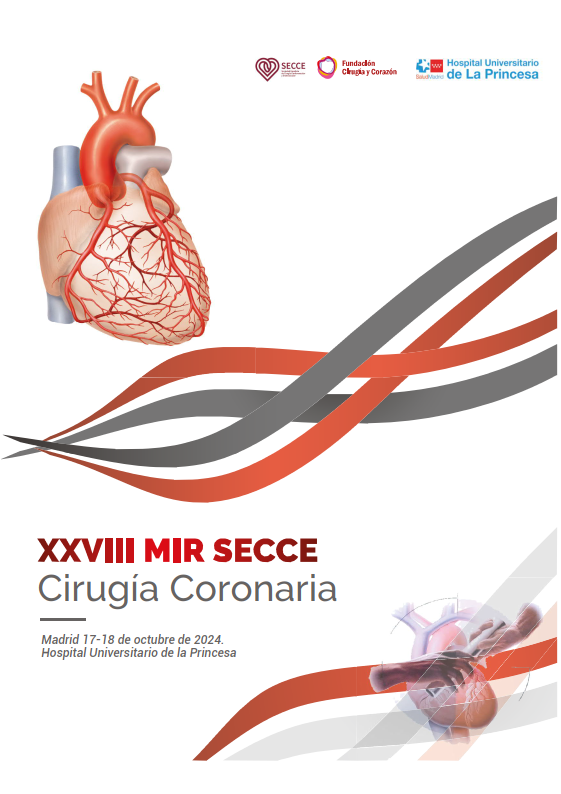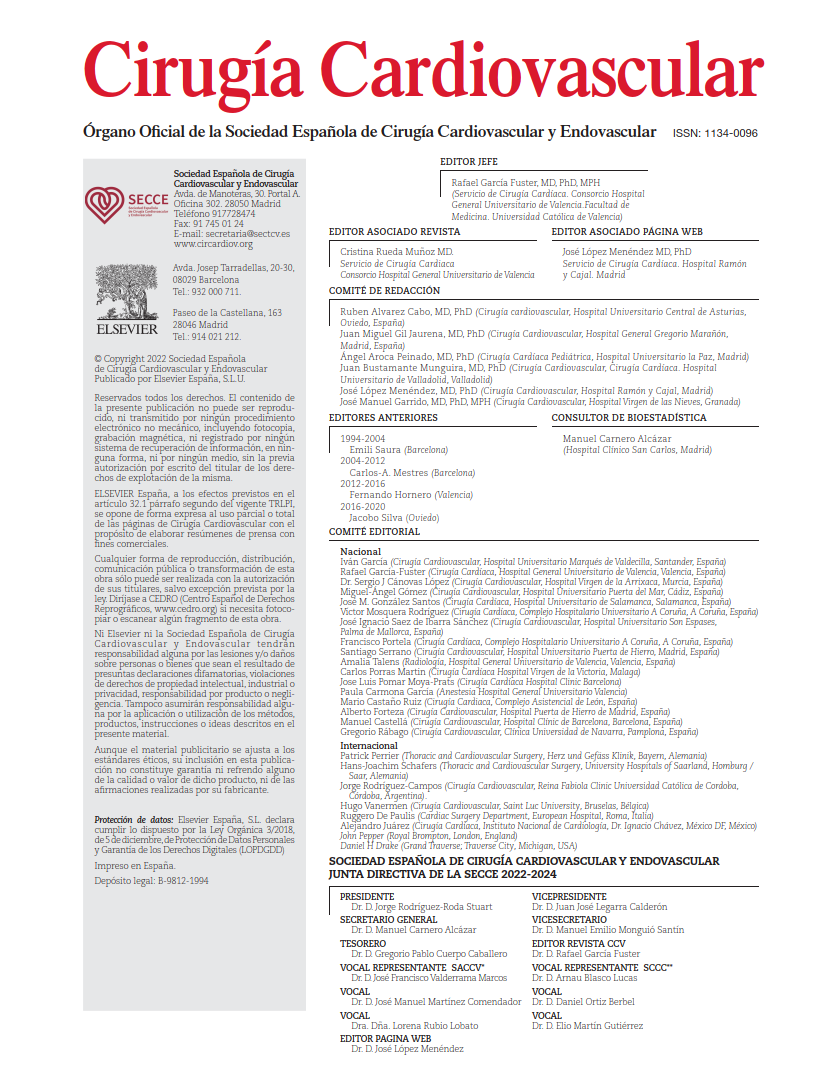Cardiogenic shock (CS) related to acute myocardial infarction (AMI) is a clinical condition with persistently high mortality rates over the past two decades, despite improvements in “door-to-balloon” times, advancements in revascularization techniques, and the introduction of short-term ventricular assist devices.
Extracorporeal cardiopulmonary resuscitation via early implementation of a VA-ECMO in patients experiencing cardiac arrest, analyzed in randomized clinical trials (RCTs) such as the INCEPTION trial, does not seem to offer significant survival benefits. Similarly, early implantation of these devices in other RCTs, such as ECMO-CS in the context of CS of various etiologies, also failed to show relevant benefits. Specifically in the case of CS secondary to AMI, the results are mixed. While the ECLS-SHOCK study found no significant differences in 30-day mortality, the DANGER study became the first to demonstrate a survival benefit at 180 days with the early use of Impella CP®.
Nevertheless, both studies reported a mortality rate of over 45% in the intervention groups, underscoring the considerable challenge of improving survival in these patients, regardless of the strategies employed. All these studies have been analyzed and commented on in previous blog publications.
CS is a syndrome where response time is crucial. While some patients can be effectively managed with medical treatment, others, depending on the severity of CS and factors such as comorbidities or coronary reserve, require therapeutic escalation through ventricular assist devices to prevent irreversible multi-organ failure.
Primarily supported by observational studies, the most recent guidelines from the American Heart Association (AHA) and the European Society of Cardiology (ESC) recommend mechanical support in cases of persistent hemodynamic deterioration despite inotropic and vasopressor support. However, they do not clearly indicate the optimal timing for such implementation. Similarly, the aforementioned RCTs do not provide a definitive conclusion regarding the ideal timing (if it exists) to initiate the use of these devices.
The study we will discuss below, unlike those mentioned previously, seeks to analyze this issue in a real-life setting, as it is an observational and retrospective study conducted in the United States. It used data from the NRD (Nationwide Readmissions Database) to examine 4,494,888 patients hospitalized for AMI between 2016 and 2020. Among this group, 6.5% (n=294,839) experienced CS, and 37% of them (n=109,148) received short-term mechanical circulatory support (MCS) devices: intra-aortic balloon pump (IABP) in 62.1%, Impella CP® in 29.7%, and VA-ECMO in 8.2%.
Patients with CS were divided into three groups: no circulatory assistance (n=185,691), early MCS implantation within the first 24 hours (n=76,906), and late MCS implantation after the first 24 hours (n=32,241).
The results were presented comparatively between patients with and without MCS, as well as between those with early versus late MCS.
- Patients with MCS vs. Without MCS
Patients without MCS were older (69 vs. 66 years, p < .001), had a higher proportion of women (38% vs. 30%, p < .001), and presented more comorbidities such as COPD, atrial fibrillation, or chronic kidney failure. Conversely, the group with MCS showed a higher proportion of anterior AMI (31.4% vs. 12.8%, p < .001) and STEMI (57.8% vs. 37.7%, p < .001). Additionally, patients with MCS were more likely to receive coronary revascularization, either percutaneous (55.3% vs. 28.5%) or surgical (25.6% vs. 10%).
Although in-hospital mortality was higher in patients without MCS (36.4% vs. 33.9%, p < .001), complications were more frequent among those who received assistance, including major bleeding (28% vs. 21%, p < .001), stent thrombosis (3% vs. 1.2%, p < .001), and arterial ischemia (2.1% vs. 0.9%, p < .001).
- Early vs. Late MCS
Patients with late MCS were older, had more comorbidities, and had a higher proportion of women. In the early group, there were more cases of STEMI (68.1% vs. 31.9%, p < .001) and anterior AMI (37.9% vs. 14.9%, p < .001), as well as a greater use of percutaneous revascularization (60.7% vs. 41.7%, p < .001). However, the late MCS group underwent more surgical revascularizations (39% vs. 20%, p < .001).
Although there were no significant differences in overall mortality between the groups (33.7% vs. 33.9%, p = .683), multivariate analysis showed that early MCS implantation was associated with lower in-hospital mortality (HR 0.9; 95% CI 0.85–0.94; p < .001). This benefit was observed regardless of the device used: IABP (HR 0.9; p = .001), Impella (HR 0.92; p = .04), and VA-ECMO (HR 0.85; p = .041).
The late MCS group presented more complications, such as ischemic stroke (3.6% vs. 2.8%, p < .001), major bleeding (33.7% vs. 25.8%, p < .001), and a greater need for renal replacement therapy (13.1% vs. 7.9%, p < .001). They also experienced longer hospitalizations (15 days vs. 7 days, p < .001) and higher costs.
The predictors of mortality among patients with MCS were identified as in-hospital sudden death, STEMI, anterior AMI, advanced renal failure, diabetes, obesity, cirrhosis, and being female.
The authors concluded that among patients receiving MCS for CS secondary to AMI, early use of MCS was associated with fewer complications, shorter hospital stays, lower hospital costs, and reduced mortality and readmissions at 30 days.
COMMENTARY:
One of the main contributions of this study, beyond the specific findings regarding the use of MCS in the context of shock, is the detailed perspective it offers on the situation of CS secondary to AMI in real-world clinical practice. The study is based on the NRD database, which includes approximately 60% of the United States population—a considerable sample size that supports the robustness of its findings. The incidence of CS in patients with AMI was 6.5%, of which 37% received some type of MCS. This translates to over 100,000 patients who received MCS, a figure unimaginable if we look back 20 years.
Secondly, the results of this study stand out for the relatively low hospital mortality observed in patients with and without MCS, with 33.9% in the MCS group and 36.4% in the non-MCS group. These figures are notably lower than the mortality reported in the RCTs mentioned in the introduction, which hovers around 50%. It should be noted that, in most of the RCTs, patients presented with a degree of severity of cardiogenic shock classified as D and E according to the SCAI classification, validated in 2019. This suggests that the participants of these trials were likely in worse clinical conditions compared to those analyzed in this study based on real-world clinical practice. From these findings, it can also be inferred that, regardless of whether MCS is used early or late, the decision to implement these devices seems to be generally based on sound clinical judgment and aligned with the outcomes obtained.
Thirdly, it is particularly striking to observe the low rate of coronary revascularization, despite being an intervention with a level of evidence IA according to AHA guidelines. Only 38.5% of AMI patients complicated with CS without MCS were revascularized, while in the MCS group, the figure rose to approximately 80%. However, this percentage remains relatively low considering that emergent revascularization is the strategy with the highest evidence for reducing mortality in this patient group.
It is important to acknowledge the observational and retrospective nature of the study, as well as the inherent limitations of using coding systems to determine diagnoses and procedures, which can introduce selection and confusion biases. These limitations include the lack of specific criteria for defining CS and establishing clear indications for circulatory support. Moreover, the study does not provide detailed data on essential aspects of acute cardiac care, such as hemodynamic status, use of vasoactive drugs, or the precise timing of the support implantation relative to coronary intervention. These data would have been fundamental to better understanding at which stage treatment escalation is decided and to more accurately assess the severity of shock.
In my view, the significant importance of this study lies in its description of the real incidence and prognosis of CS in the context of AMI in the U.S. population, as well as the contemporary use of short-term MCS. Additionally, it expands the limited evidence available regarding the (cautiously taken) benefit of early use of these devices in patients with advanced CS and poor prognosis, especially before the development of multi-organ failure. Lastly, we must not forget that in CS secondary to AMI, emergent revascularization remains a fundamental strategy. However, the results of this study indicate that its implementation is suboptimal, both in terms of quantity and effectiveness, even in patients equipped with assist devices. Until this is addressed, we will never be able to objectively assess the real efficacy of these devices.
REFERENCE:
Buda KG, Hryniewicz K, Eckman PM, Basir MB, Cowger JA, Alaswad K, et al. Early vs. delayed mechanical circulatory support in patients with acute myocardial infarction and cardiogenic shock. Eur Heart J Acute Cardiovasc Care. 2024 May 28;13(5):390-397. doi: 10.1093/ehjacc/zuae034.



